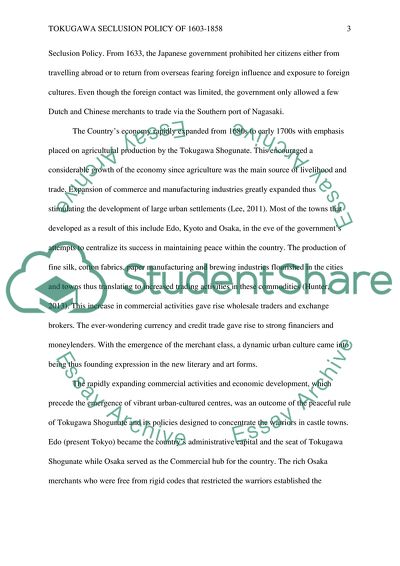Cite this document
(Tokugawa Seclusion Policy of 1603-1858 Essay Example | Topics and Well Written Essays - 1500 words, n.d.)
Tokugawa Seclusion Policy of 1603-1858 Essay Example | Topics and Well Written Essays - 1500 words. https://studentshare.org/history/1876813-how-did-tokugawa-japans-seclusion-policy-1603-1858-assist-andor-inhibit-meiji-japans-modernization-process
Tokugawa Seclusion Policy of 1603-1858 Essay Example | Topics and Well Written Essays - 1500 words. https://studentshare.org/history/1876813-how-did-tokugawa-japans-seclusion-policy-1603-1858-assist-andor-inhibit-meiji-japans-modernization-process
(Tokugawa Seclusion Policy of 1603-1858 Essay Example | Topics and Well Written Essays - 1500 Words)
Tokugawa Seclusion Policy of 1603-1858 Essay Example | Topics and Well Written Essays - 1500 Words. https://studentshare.org/history/1876813-how-did-tokugawa-japans-seclusion-policy-1603-1858-assist-andor-inhibit-meiji-japans-modernization-process.
Tokugawa Seclusion Policy of 1603-1858 Essay Example | Topics and Well Written Essays - 1500 Words. https://studentshare.org/history/1876813-how-did-tokugawa-japans-seclusion-policy-1603-1858-assist-andor-inhibit-meiji-japans-modernization-process.
“Tokugawa Seclusion Policy of 1603-1858 Essay Example | Topics and Well Written Essays - 1500 Words”. https://studentshare.org/history/1876813-how-did-tokugawa-japans-seclusion-policy-1603-1858-assist-andor-inhibit-meiji-japans-modernization-process.


